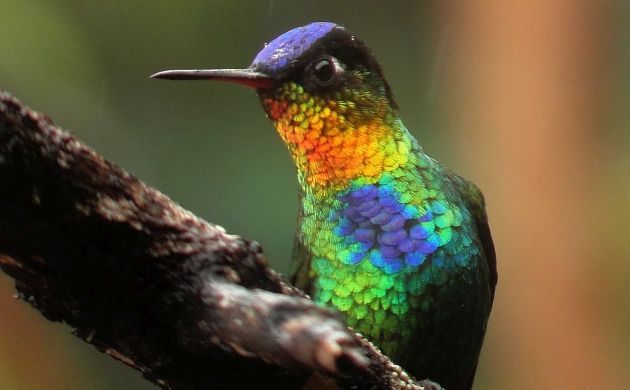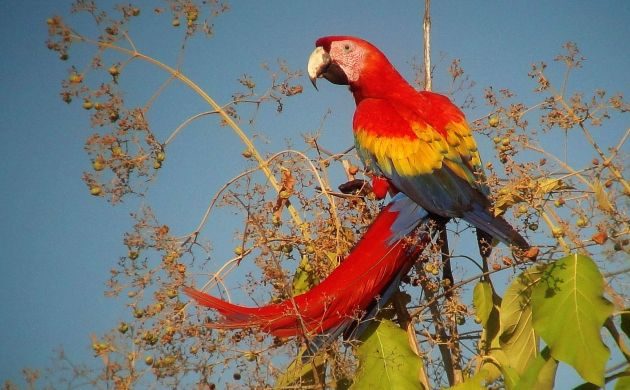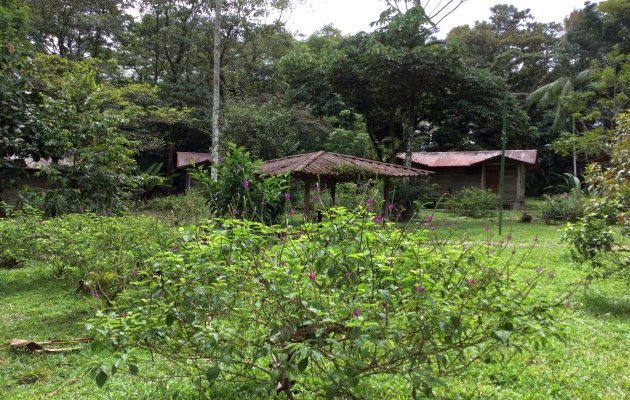
In the northern temperate zone, August is a time of hazy, lazy dog days, a month when you soak up that last bit of summer during outdoor picnics and shorebird chases. While growing up in Niagara Falls, New York, I often wondered if the warm and humid weather was similar to the constant short-wearing climes of tropical places. Having lived in Costa Rica for several years, I recall those glorious August days in the 80s and can say that yes, it is rather like August, all year long. Differences exist but August in Niagara is much closer to Costa Rica than a Niagara November.

On the birding side of the coin, August up north is the quiet before the big fall migration rush, a time when many birds quiet down and change feathers before they chase the summer south. The woods and fields lack much of the bird song of May and June but coastal habitats and wetlands are another story. In August these are the exciting habitats to visit, the mud flats and sewage treatment plants are where the bird action is happening. Shorebirds have left their northern tundra pools and boreal fens, August is when they pass through much of North America. In Costa Rica, we see some of that same migration but in keeping with us being a lot further south, peak shorebird migration here is more in September and October. Even so, we do have some sandpipers and plovers around; there have been recent reports of Surfbirds and various other wading species.
Go birding in Costa Rica in August and you will find shorebirds. Even though it’s not the most popular month to visit Costa Rica, you can see a lot of other birds too. Here’s some of what’s been happening over the past two months.
Harpy Eagle!
The biggest birding news for Costa Rica was a sighting of an adult Harpy Eagle in northern Costa Rica, near Boca Tapada. A group of kayakers were riding in a vehicle along the main road near the village of Boca Tapada when one of them noticed a massive bird in a roadside tree. Their local guide excitedly confirmed the bird as a Harpy Eagle (only the most dearly wanted species for every birder in Costa Rica), took photos and video, and spread the news.
A group of local birders went to the site as quick as they could but since the trip still took two to three hours, the bird was long gone. Further searches haven’t refound the eagle but given the huge territory used by this top rainforest predator and its propensity to remain under cover, that hasn’t been surprising. This was and is major local birding news because it answers one of the biggest and most consistent questions on the minds of local and visiting birders.
The birding community now knows, without a doubt, that at least one Harpy Eagle still occurs in Costa Rica. Personally, I wasn’t surprised that the sighting happened where it did. It occurred right in the area where I expected a Harpy Eagle to be seen, in part of an extensive, little explored forest complex connected to the Indio Maiz Reserve, a large, extremely important area of lowland rainforest in Nicaragua that still hosts a population of the large eagles. We don’t know if the bird seen in late July near Boca Tapada was a wandering individual in search of territory or maybe even a bird that has always lived in Costa Rica but given the large areas of suitable habitat near there, I lean towards the latter idea. I think it’s likely that at least one pair of Harpy Eagles occurs near there, now, we just need to refind the bird, or, even better, find a nest (!) while simultaneously working to educate locals about the importance of protecting this top bird of prey.
The Costa Rica Bird List grows…
With more than 900 species of birds identified from a country the size of West Virginia, it might be an understatement to say that Costa Rica has a lot of bird species. Incredibly, we keep adding birds to the list, even unexpected species like the Spectacled Petrel! Although the official Costa Rica bird list was recently updated, thanks to recent sightings in June and July, at least two or three more species will probably be added to the list.
The first is an albatross spotted and videod off the Pacific Coast. So far, it appears to have been a Salvin’s Albatross, a bird more at home in the Humboldt Current. Whether it was that species or another, it’s definitely new for the Costa Rica list! The other likely new birds were a probable Lesson’s Seedeater photographed in Tortuguero, and a probable Southern Martin photographed near Turrialba. These sightings have yet to be voted on and approved by the bird list committee but they still act as reminders to take pictures of any unfamiliar bird no matter where you go birding. It’s also worth mentioning that in keeping with the goal of providing birders with the latest in bird information for Costa Rica, these three species have also been included in a recent update for the Costa Rica Birds Field Guide app.
Bare-necked Umbrellabird at Centro Manu

Just as with 2021, the rare and endangered (and spectacular) Bare-necked Umbrellabird has once again migrated to the lowland and foothill rainforests of Centro Manu. This wonderful little reserve is turning out to be a fantastic and very important site for this and other species. If you are headed to Costa Rica, you might want to schedule a visit. Hire local guide Kenneth to see the umbrellabird and various other quality lowland rainforest species.
Lots of Booking for the High Season
This last piece of birding news is more of a recommendation. The winter may seen far away but high season bookings for Costa Rica are taking place in earnest. If you plan on birding in Costa Rica from January to April, 2023 and want to stay at any of the popular sites, I suggest reserving rooms now. For some dates, some of the most popular hotels are already booked. Don’t wait to make reservations! However, if you do have trouble finding places to stay, don’t give up. There are plenty of lesser known but excellent places in every corner of Costa Rica. I can help, contact me at information@birdingcraft.com
As always, there’s lots more to be said about the birding in Costa Rica. There’s always lots to see, you have a great chance of seeing a Fiery-throated Hummingbird, and the birding is generally fantastic. I hope to see you here!













Pat, why don’t you add more tags, beside “Costa Rica”, perhaps individual locations that you more often cover? Or at lest the biomes, e.g. Caribbean foothills? It would be easier to search through.